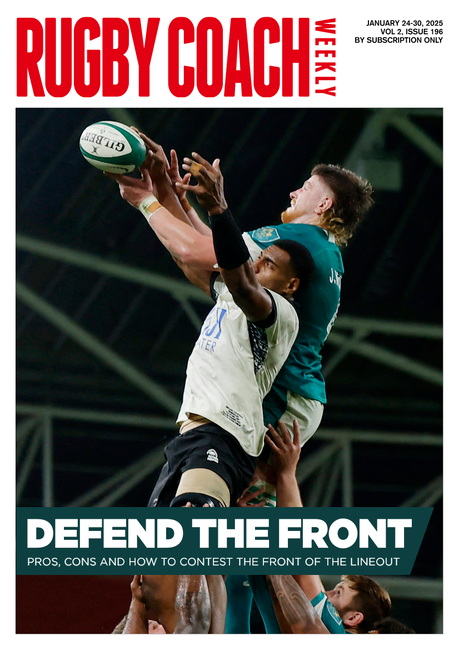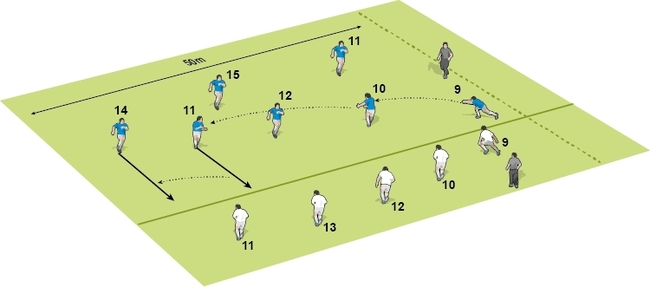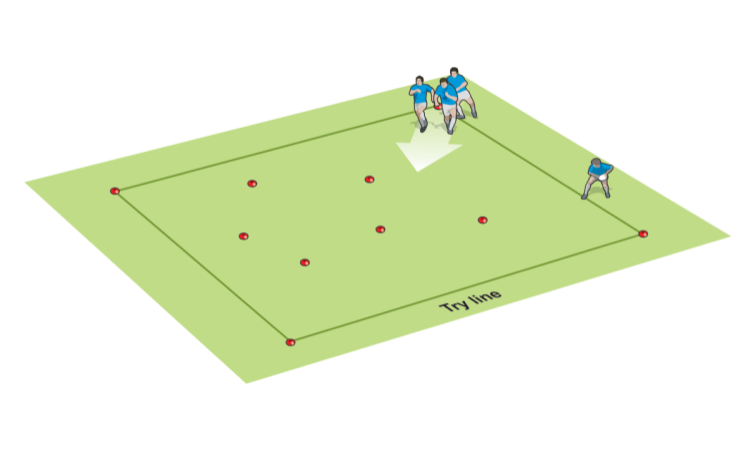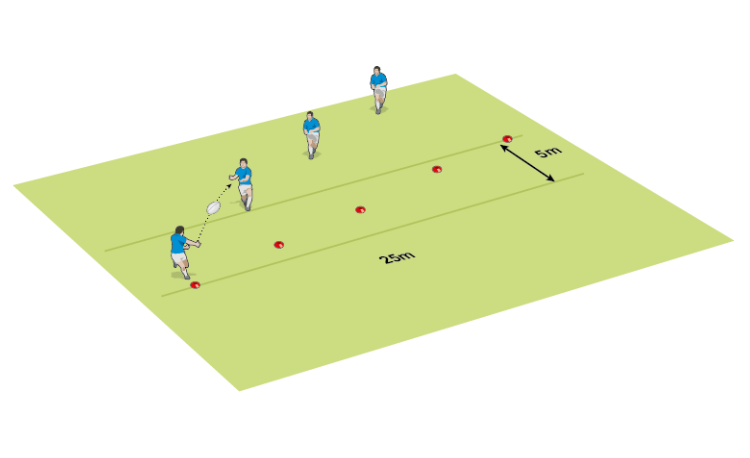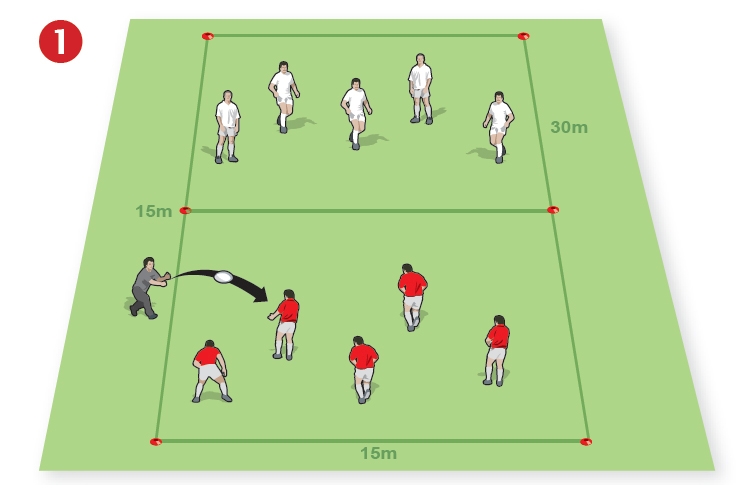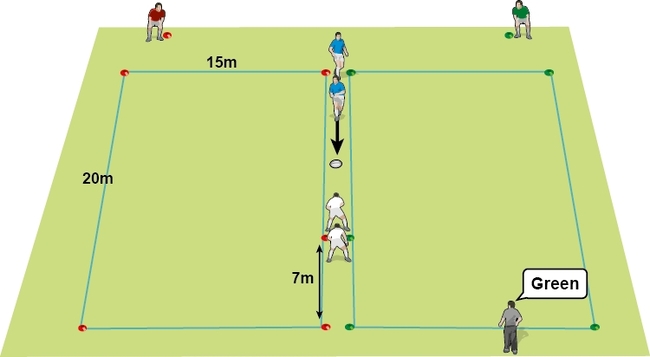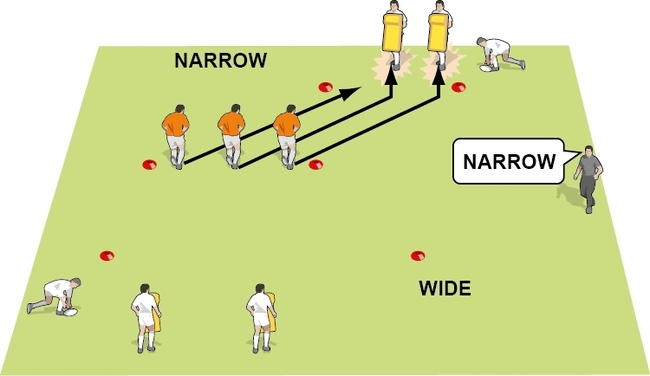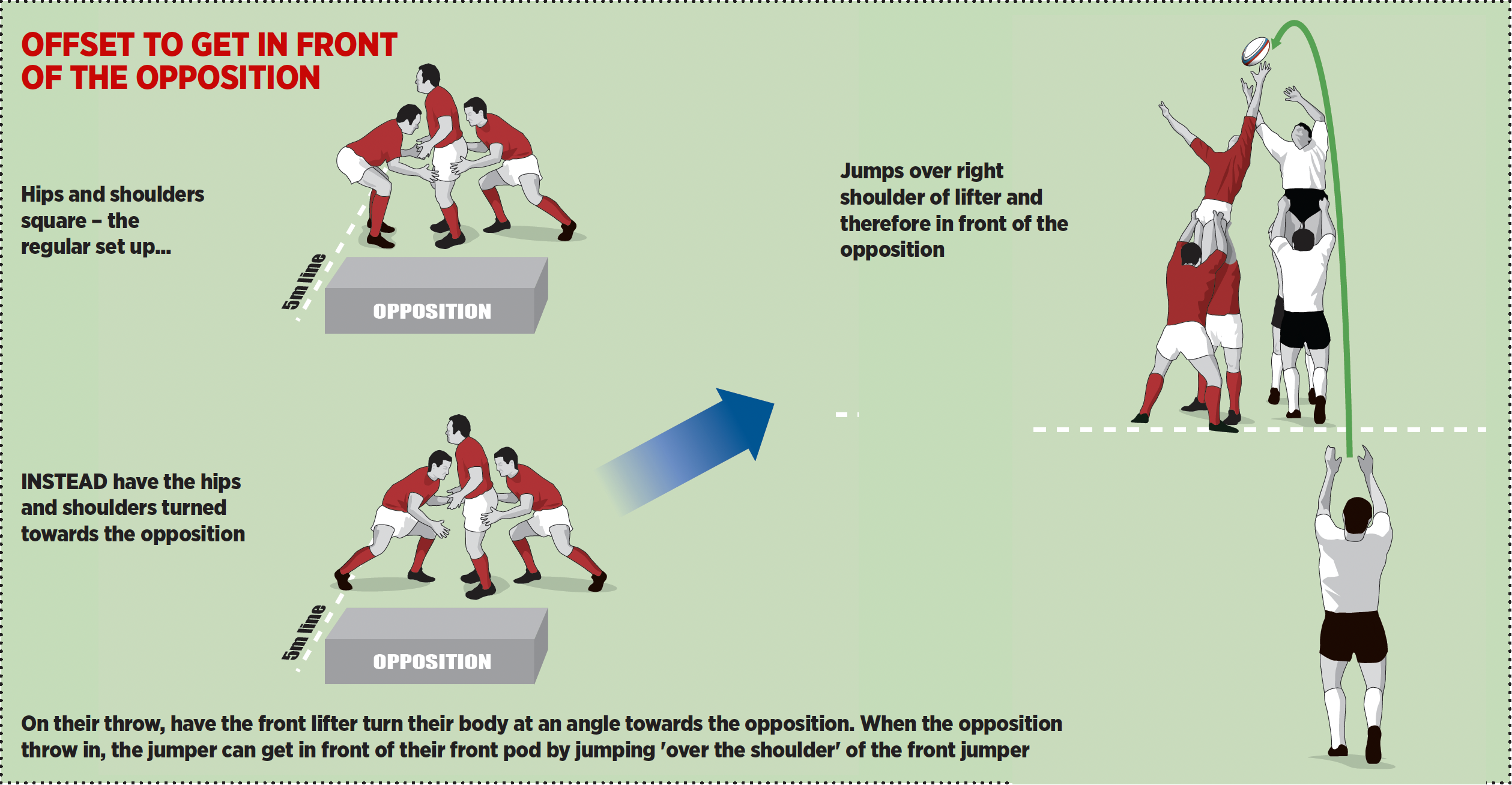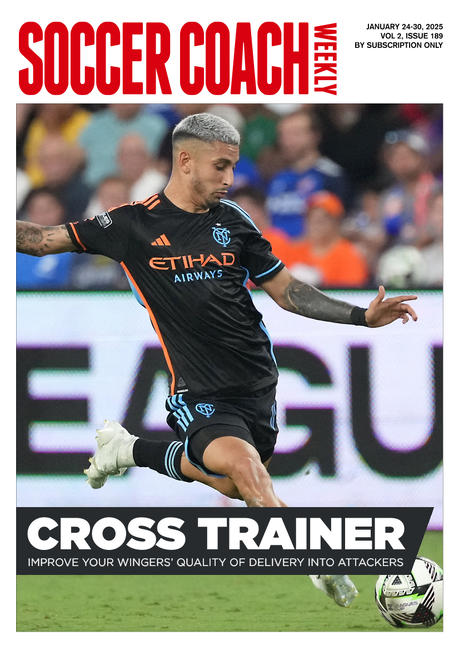A session to sharpen your midfield
Backs Movesby Dan Cottrell
Build your players’ understanding of running lines so they can read what’s in front of them. These exercises will help your fly half and centres decide on the best pass or running line to use in a game.
Start the session by putting 10 or so players in a 15m square box with one ball. Nominate two chasers, whose objective is to touch another player with the ball. They can’t run when they’re holding the ball so must pass it between themselves.
Any player who’s touched, or who runs outside the box, becomes a chaser. Play until all the players are touched.
The game works on anticipation. The chasers must work out where they and the ball need to be to meet the running line of a target. With better players, you may want to expand the box. This will test anticipation skills further, as well as communication, footwork and passing.
I call this game “corners” because if you can get people into a corner it’s easier to capture them.
I’m concentrating on decisions made at 10, 12 and 13. In open play, any back could find himself in one of these positions, so it’s good to swap players in and out.
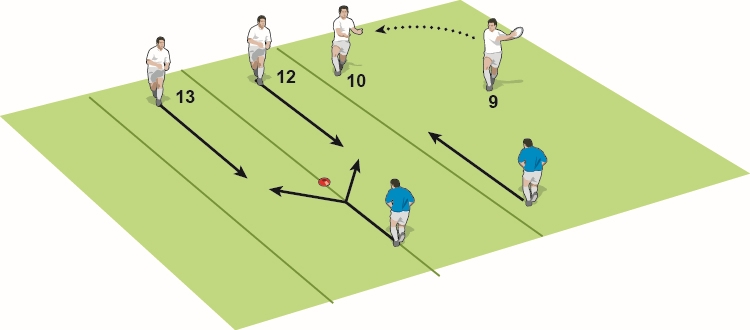
Now add two defenders. One to pressurise the 10, and one to run into either the 12’s or 13’s channel. The 10 has to read the picture in front of him and pass to a player in space.
Increase or reduce the distances that the defence comes up from. Again, in an actual game the defence won’t always be in your team’s space quickly. Sometimes, too, they’ll arrive from an offside position.
As part of the process, don’t let either 12 or 13 call for the ball. Let 10 recognise the space himself and pass into the expected path of the player.

WARM-UP GAME
Start the session by putting 10 or so players in a 15m square box with one ball. Nominate two chasers, whose objective is to touch another player with the ball. They can’t run when they’re holding the ball so must pass it between themselves.
Any player who’s touched, or who runs outside the box, becomes a chaser. Play until all the players are touched.
The game works on anticipation. The chasers must work out where they and the ball need to be to meet the running line of a target. With better players, you may want to expand the box. This will test anticipation skills further, as well as communication, footwork and passing.
I call this game “corners” because if you can get people into a corner it’s easier to capture them.
MAKING IT GAME-RELATED
I’m concentrating on decisions made at 10, 12 and 13. In open play, any back could find himself in one of these positions, so it’s good to swap players in and out.
Exercise 1 – centre channels

- First, set up two channels for the 12 and 13 to run through, with the 10 passing to either player.
- The 10 doesn’t tell the players who he’s going to pass to. This promotes good alignment and awareness.
- Allow the 12 to pass on to 13 if he wants. And encourage both these players to run different angles.
- Start the exercise with a pass from 9. This is essential because the triggers to start running come from the first pass.
APPLYING SOME PRESSURE
Now add two defenders. One to pressurise the 10, and one to run into either the 12’s or 13’s channel. The 10 has to read the picture in front of him and pass to a player in space.
Increase or reduce the distances that the defence comes up from. Again, in an actual game the defence won’t always be in your team’s space quickly. Sometimes, too, they’ll arrive from an offside position.
As part of the process, don’t let either 12 or 13 call for the ball. Let 10 recognise the space himself and pass into the expected path of the player.
Exercise 2 - changing the picture

- To complete the session, change the angle of the defenders’ approach.
- Instead of coming straight forward, they drift as if one is coming from the back of a ruck and the other drifting into the centres.
TWO KEY POINTS FOR MAKING GOOD DECISIONS
- Timing comes from anticipation, not from depth. Look ahead to the likely gaps, and use changes in angles to accentuate the gap.
- The ball carrier should look for gaps in the defence and expect his support players to find them as well.
Newsletter Sign Up
Coaches Testimonials

Gerald Kearney, Downtown Las Vegas Soccer Club

Paul Butler, Florida, USA

Rick Shields, Springboro, USA

Tony Green, Pierrefonds Titans, Quebec, Canada
Subscribe Today
Be a more effective, more successful rugby coach
In a recent survey 89% of subscribers said Rugby Coach Weekly makes them more confident, 91% said Rugby Coach Weekly makes them a more effective coach and 93% said Rugby Coach Weekly makes them more inspired.
Get Weekly Inspiration
All the latest techniques and approaches
Rugby Coach Weekly offers proven and easy to use rugby drills, coaching sessions, practice plans, small-sided games, warm-ups, training tips and advice.
We've been at the cutting edge of rugby coaching since we launched in 2005, creating resources for the grassroots youth coach, following best practice from around the world and insights from the professional game.


